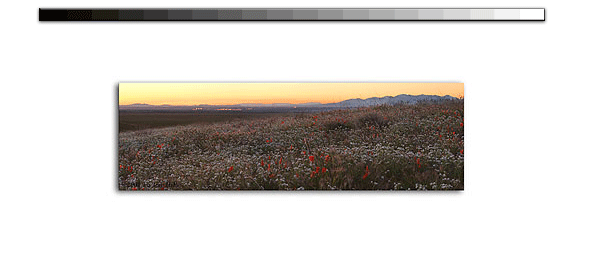|
(6) Check the Edges Its human nature to focus on the middle of a screen and disregard the edges. This happens regardless of the tiny size of veiwfinders. Just before pressing the shutter, scan the viewfinders edges to see if theres anything thatll lead a viewer off the screen. Branches or sticks that grow out of the edges tend to guide people off the picture as tiny as they may be. Zoom-in or reposition your tripod to get rid of these detractors.
(7) Keep the Slope Out of the Horizon People do not like to see things at a slant. Even though you didnt notice the slope when shooting the image, a slight horizon list can completely destroy a image. Viewing a sloping image is like being in a bad guy hideout like those old campy Batman television shows. Use a view screen with gridlines to set the horizon. Attach a bubble level on your hotshoe to keep things horizontal. As a last resort, stand back from your camera prior to shooting the image to compare the horizon and the cameras horizontal axis. If your image has a list, fix it with Photoshop and crop the parts that dont matter. Be careful when shooting hills that dont have an obvious horizon to anchor the viewer. Very slight slopes in real life are just as bad as unintentional list.
(8) Use Long Exposures The human eye is a tricky tool. While you may perceive motion when watching a running stream, fast shutter speeds freeze it in perpetude. Use long exposures to blur the water and dramatize its motion. Be careful how long you shoot at the risk of creating a white, ill-defined blur. Shoot really long exposures to create surrealistic images that dont exist in the natural world. Visualizing the affect prior to tripping the shutter is the key. Practice, practice, and more practice is the key to developing this effect and controlling the results.
(9) Compose While Handholding Your Camera Tripods are wonderful tools. They may be the most critical element for making extraordinary images. But, they arent the most convenient things. Theyre clumsy, heavy, and generally a pain to work with when you have to move around to pick a composition. Most people minimize their efforts by always shooting from eye height and never explore other perspectives. Avoid the mundane and take your camera off the tripod to maneuver yourself around. Crawl around on the ground, get on your hands and knees, do anything to get a view less seen. Pick your composition while handholding your camera, then setup your equipment on the tripod to get the image.
These are only a small set of basic tips that if followed can improve anyones landscape photography. Use them to a fault to develop your vision. Once youve got things totally under control, break the rules to take yourself to the next level.
Cheers
Tom
8 Feb 02
|
|
|




